In praise of weather (again)
Old English dun, dunn, of Germanic origin; probably related to dusk ...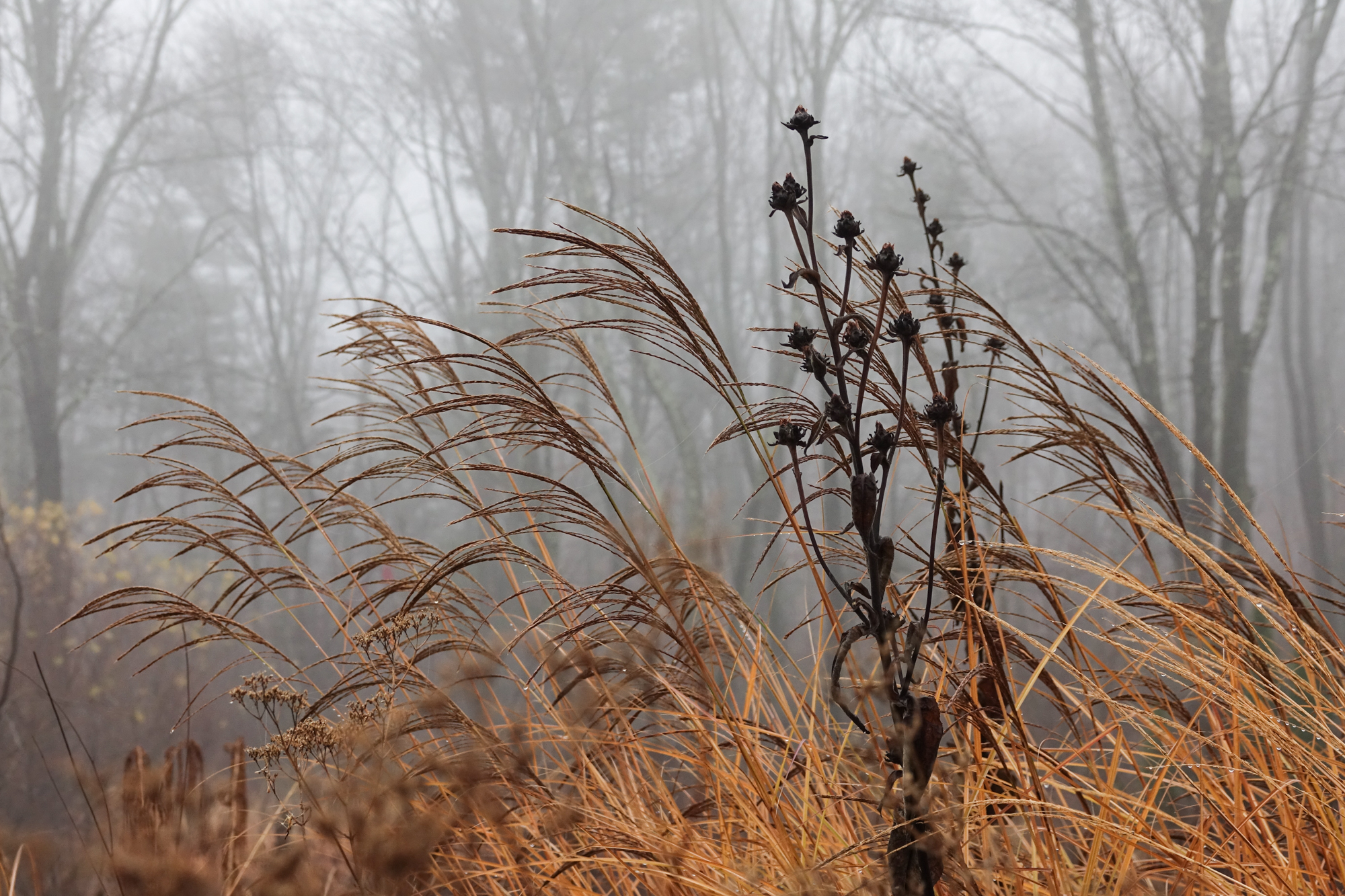 I think color is a good place to start, though perhaps not dun ... rather gold, orange, black.Three inches of rain left the garden wet, plant tissues saturated. A state that ... especially in fog ...
I think color is a good place to start, though perhaps not dun ... rather gold, orange, black.Three inches of rain left the garden wet, plant tissues saturated. A state that ... especially in fog ...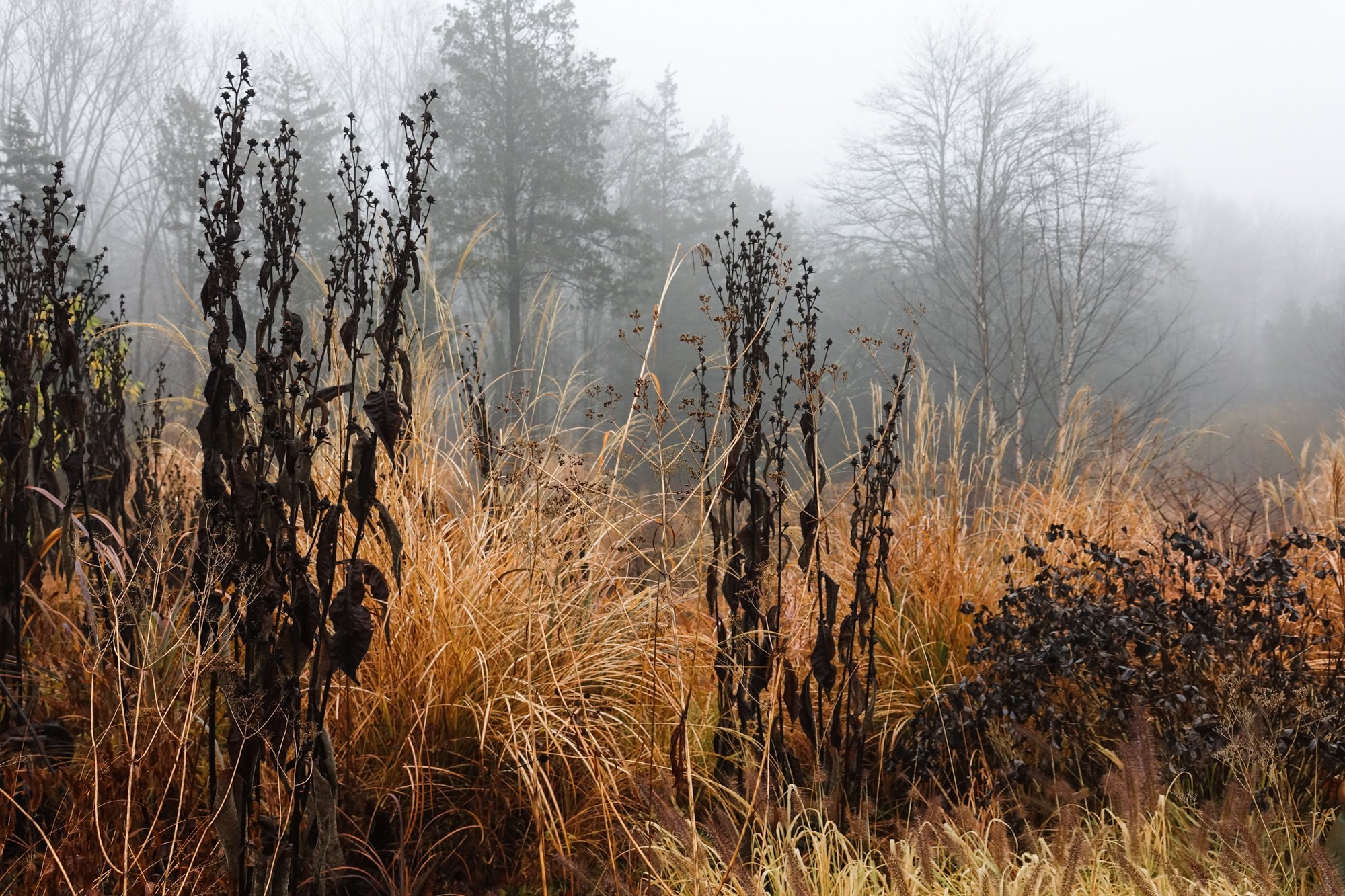 ... makes grasses radiant, and many perennials, dramatic, blackened specters. Such scenes can evoke varied, sometimes opposing feelings.
... makes grasses radiant, and many perennials, dramatic, blackened specters. Such scenes can evoke varied, sometimes opposing feelings.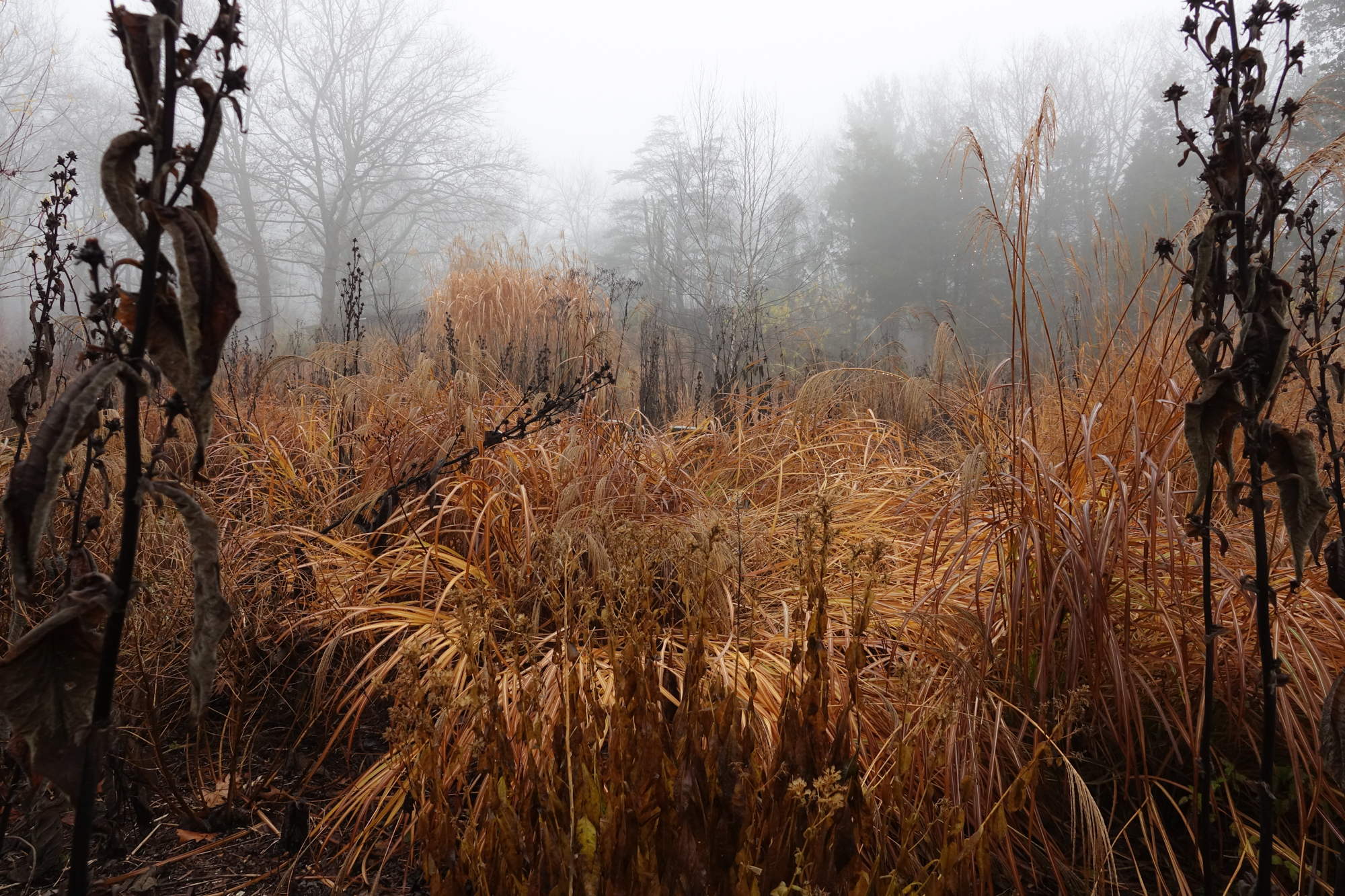 This scene of glowing golden grasses and blackened stems of Inula suggests both radiant beauty and the roiling motion of an upheaving ocean swell, a turbulent center about to erupt. The symbolism is ambiguous, though even the imminence of chaos can be visually appealing from an aesthetic distance.
This scene of glowing golden grasses and blackened stems of Inula suggests both radiant beauty and the roiling motion of an upheaving ocean swell, a turbulent center about to erupt. The symbolism is ambiguous, though even the imminence of chaos can be visually appealing from an aesthetic distance.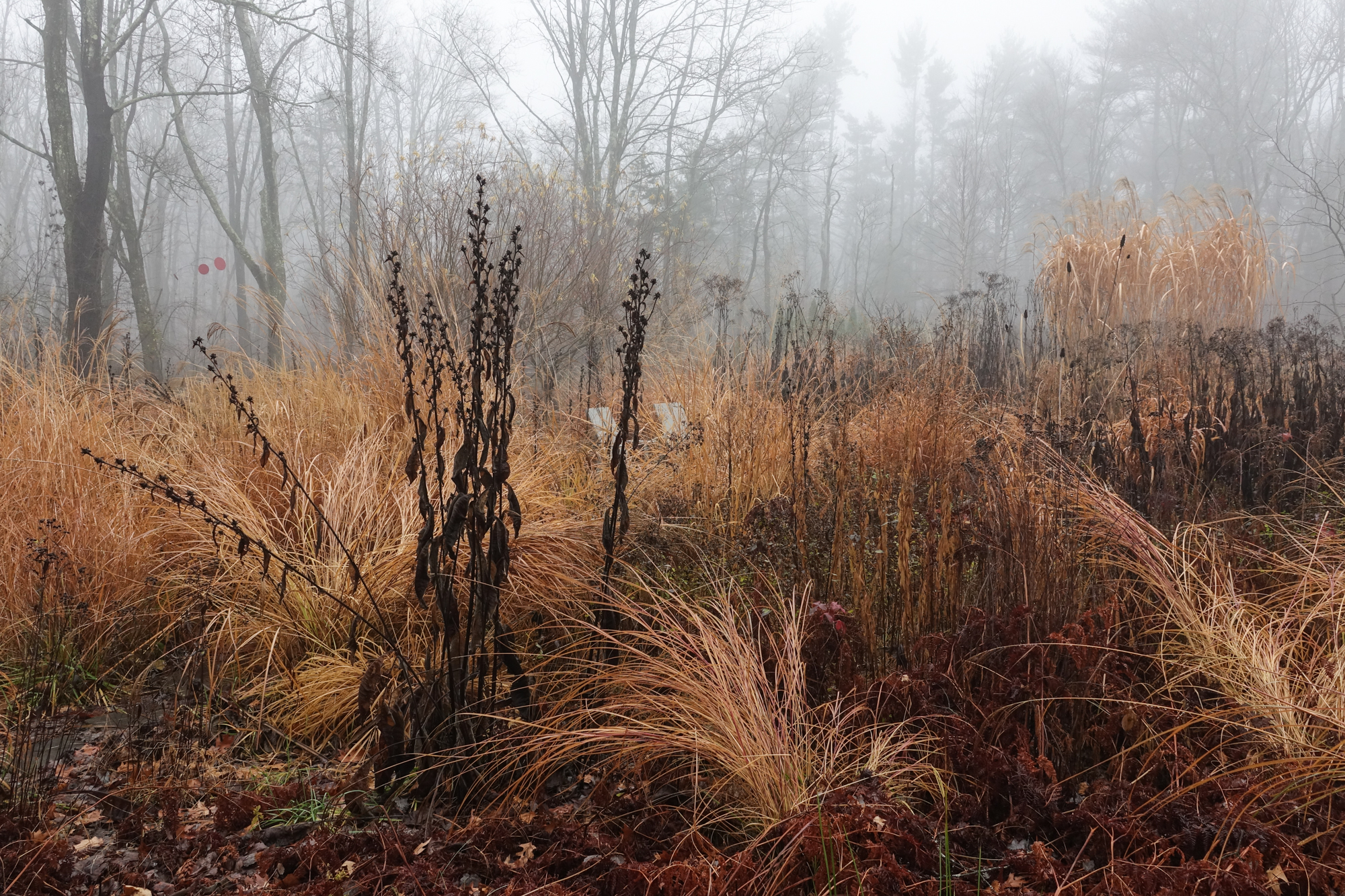 Here the man-made chairs introduce scale and a human element (another kind of distance), and begin to suggest a narrative. This scene has some kind of story and is easier to read. It tames the raw feelings accompanying the entirely vegetative scene.
Here the man-made chairs introduce scale and a human element (another kind of distance), and begin to suggest a narrative. This scene has some kind of story and is easier to read. It tames the raw feelings accompanying the entirely vegetative scene.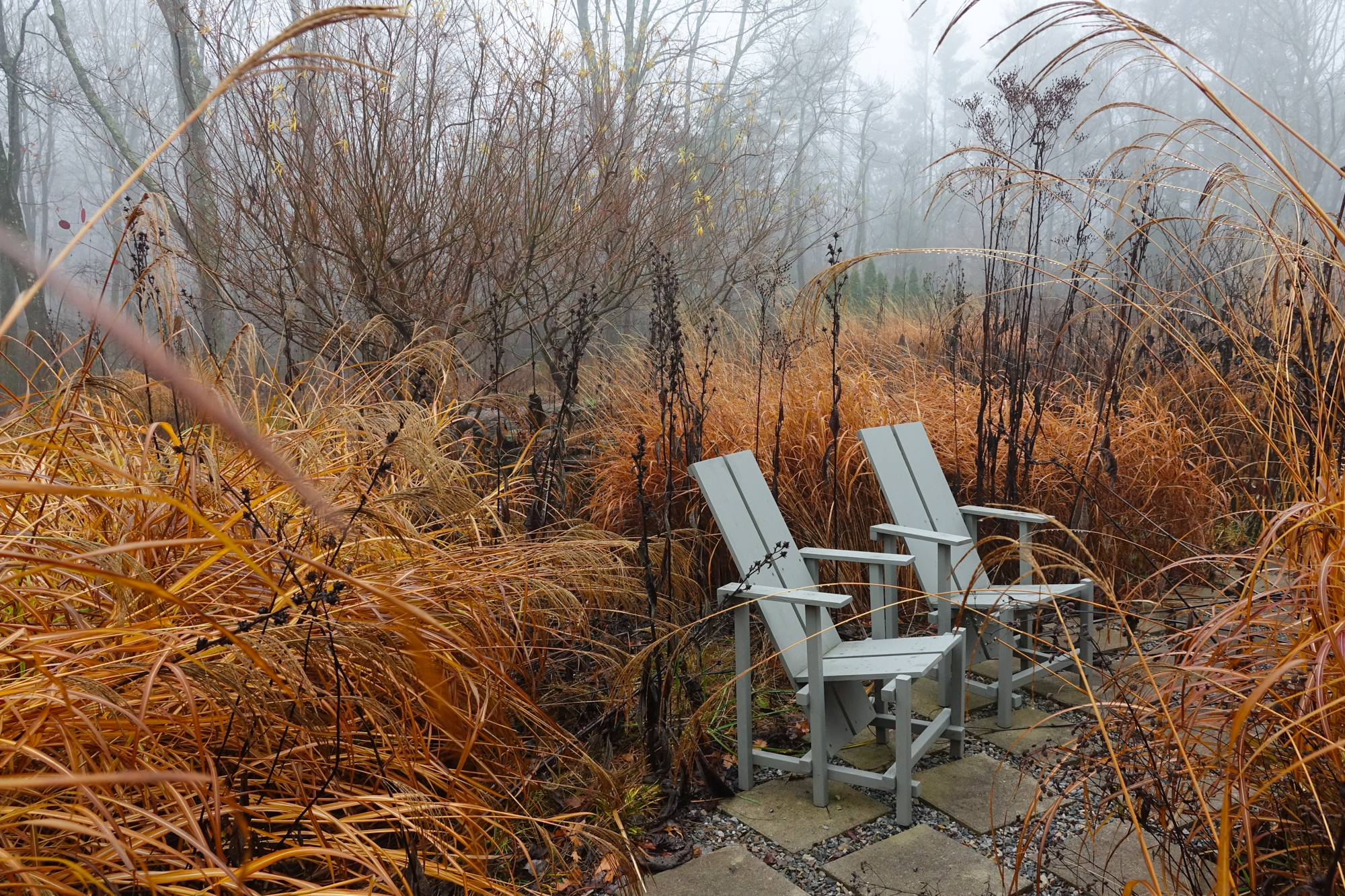 Not just the idea of chairs now, but a very specific kind of chair, easily recognized by many gardeners as the Wave Hill chair, a version of the Gerritsen Rietveld chair. So this concept introduces a human, and very specific, culture and history into the garden. The concrete pavers and gravel suggest design intent ... clearly a conscious opposing of order and chaos ...
Not just the idea of chairs now, but a very specific kind of chair, easily recognized by many gardeners as the Wave Hill chair, a version of the Gerritsen Rietveld chair. So this concept introduces a human, and very specific, culture and history into the garden. The concrete pavers and gravel suggest design intent ... clearly a conscious opposing of order and chaos ...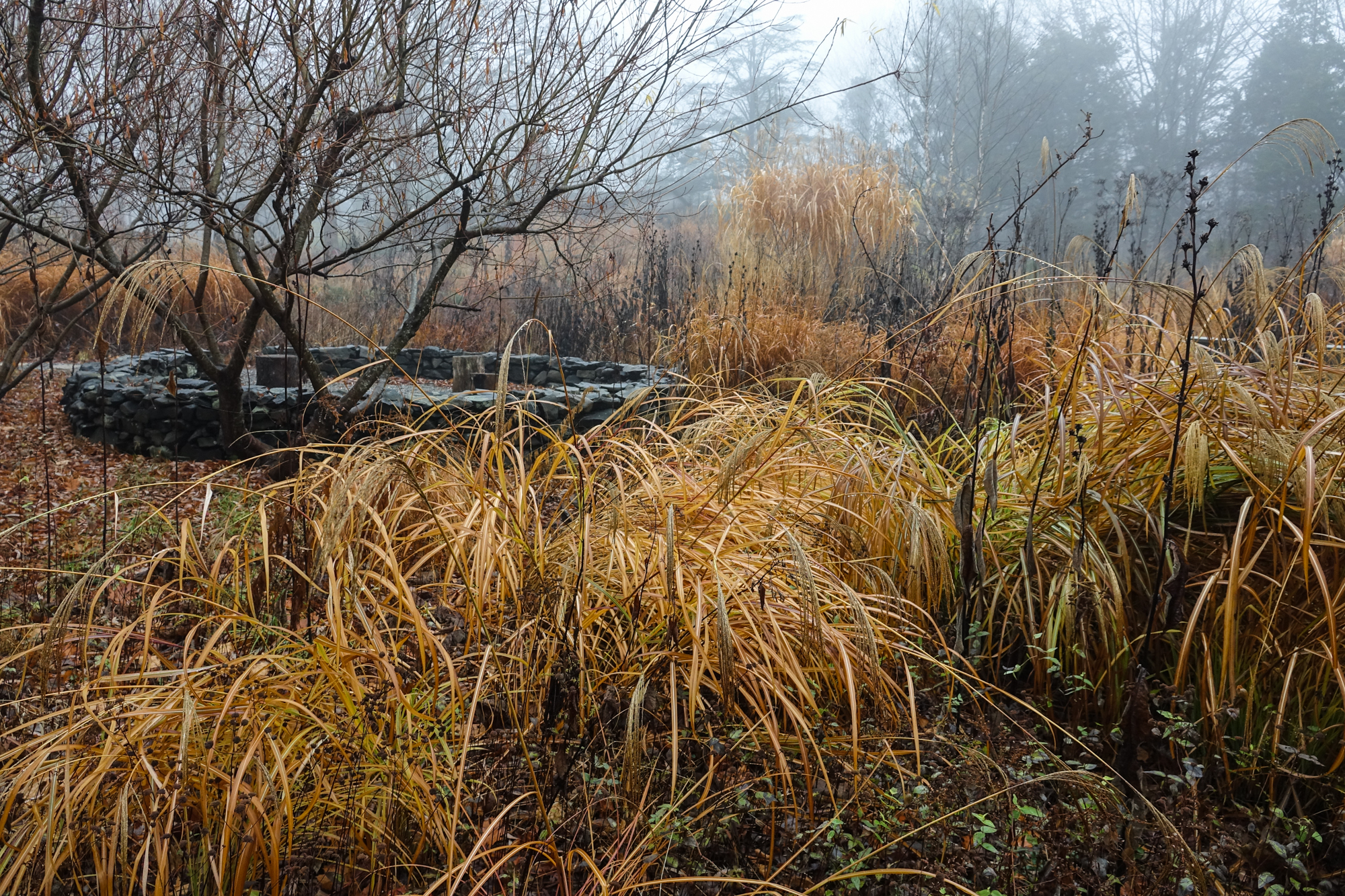 ... as does the stone circle, with its own human associations--community, ritual, Jens Jensen's council ring, perhaps the charmed state of being inside and not outside the circle.
... as does the stone circle, with its own human associations--community, ritual, Jens Jensen's council ring, perhaps the charmed state of being inside and not outside the circle.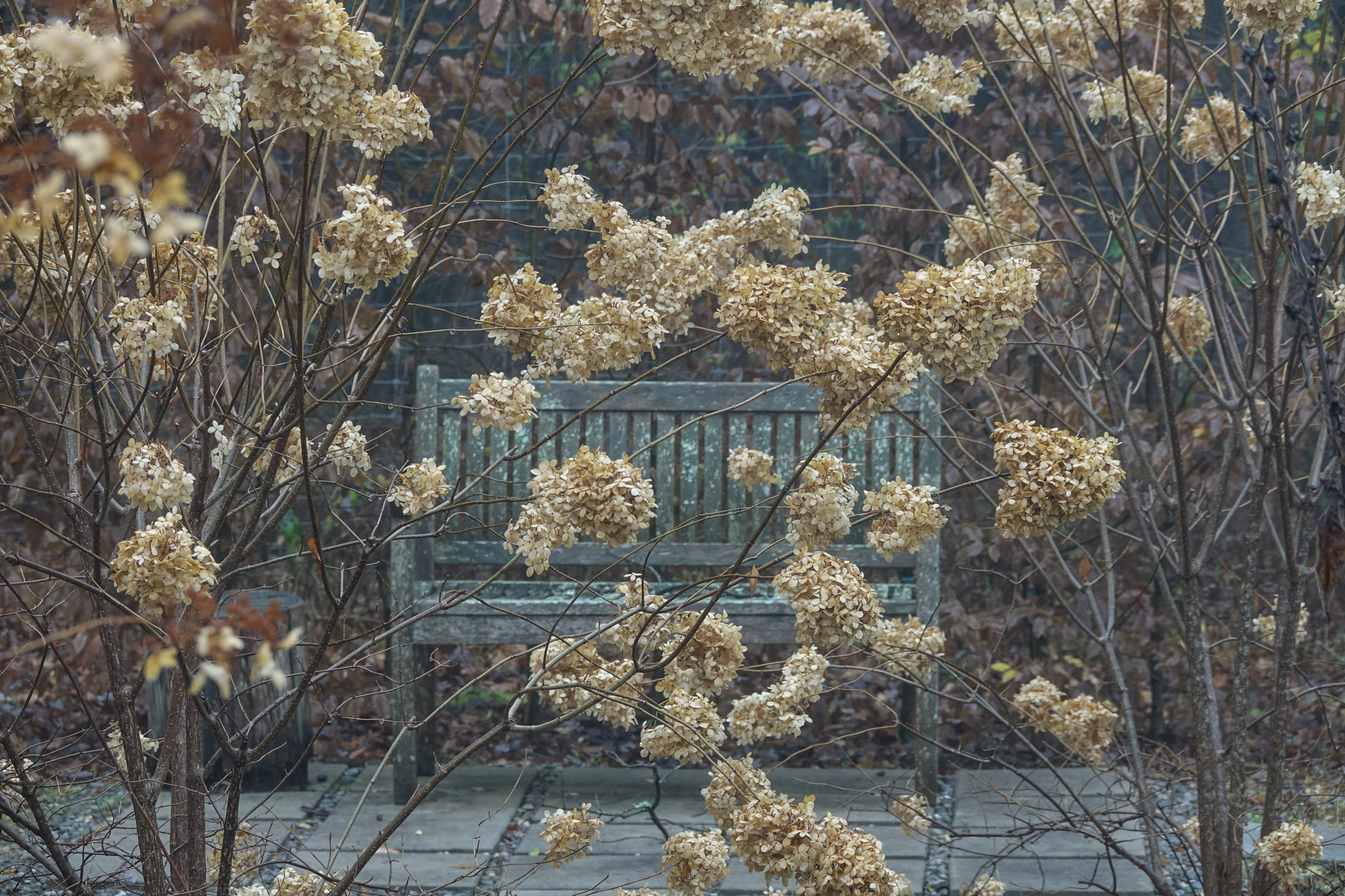 Human scale and implied human presence again, but in a dramatically different color palette. Fawns, soft grays, a blue-green algal patina. A comforting scene suggestive of Monet. So different from intense colors of the grassy images ...
Human scale and implied human presence again, but in a dramatically different color palette. Fawns, soft grays, a blue-green algal patina. A comforting scene suggestive of Monet. So different from intense colors of the grassy images ...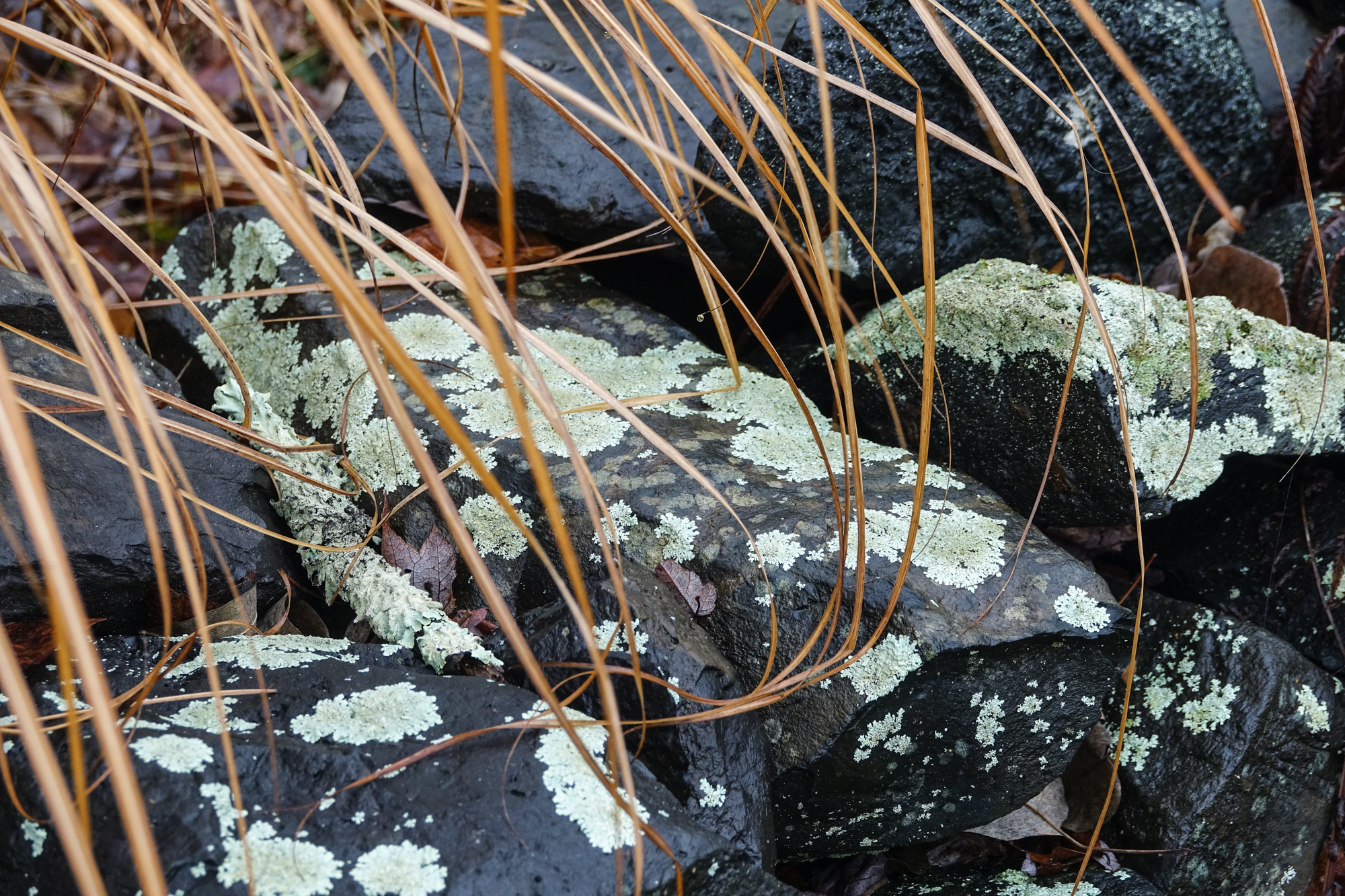 ... though if you look closely, change scale, these colors are hidden in other parts of the garden, as here in the lichen crusted rock.
... though if you look closely, change scale, these colors are hidden in other parts of the garden, as here in the lichen crusted rock.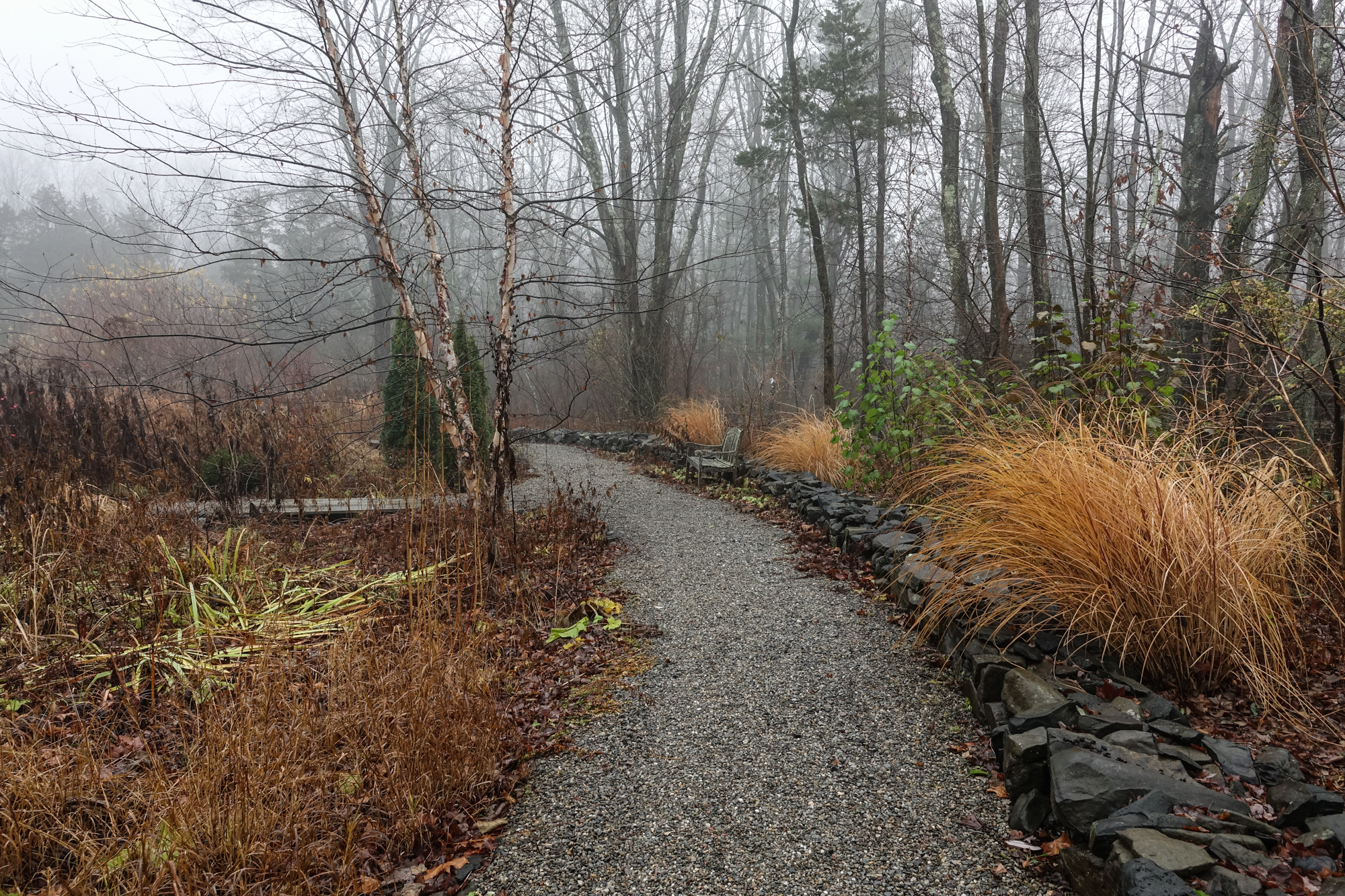 Implied narrative again ... curved path and curved stone wall, rhythmic placement of grasses, a bench, the intersection of paths ... all signs of intentional design, and of movement from one place to another, to a place out of view. But in contrast ...
Implied narrative again ... curved path and curved stone wall, rhythmic placement of grasses, a bench, the intersection of paths ... all signs of intentional design, and of movement from one place to another, to a place out of view. But in contrast ...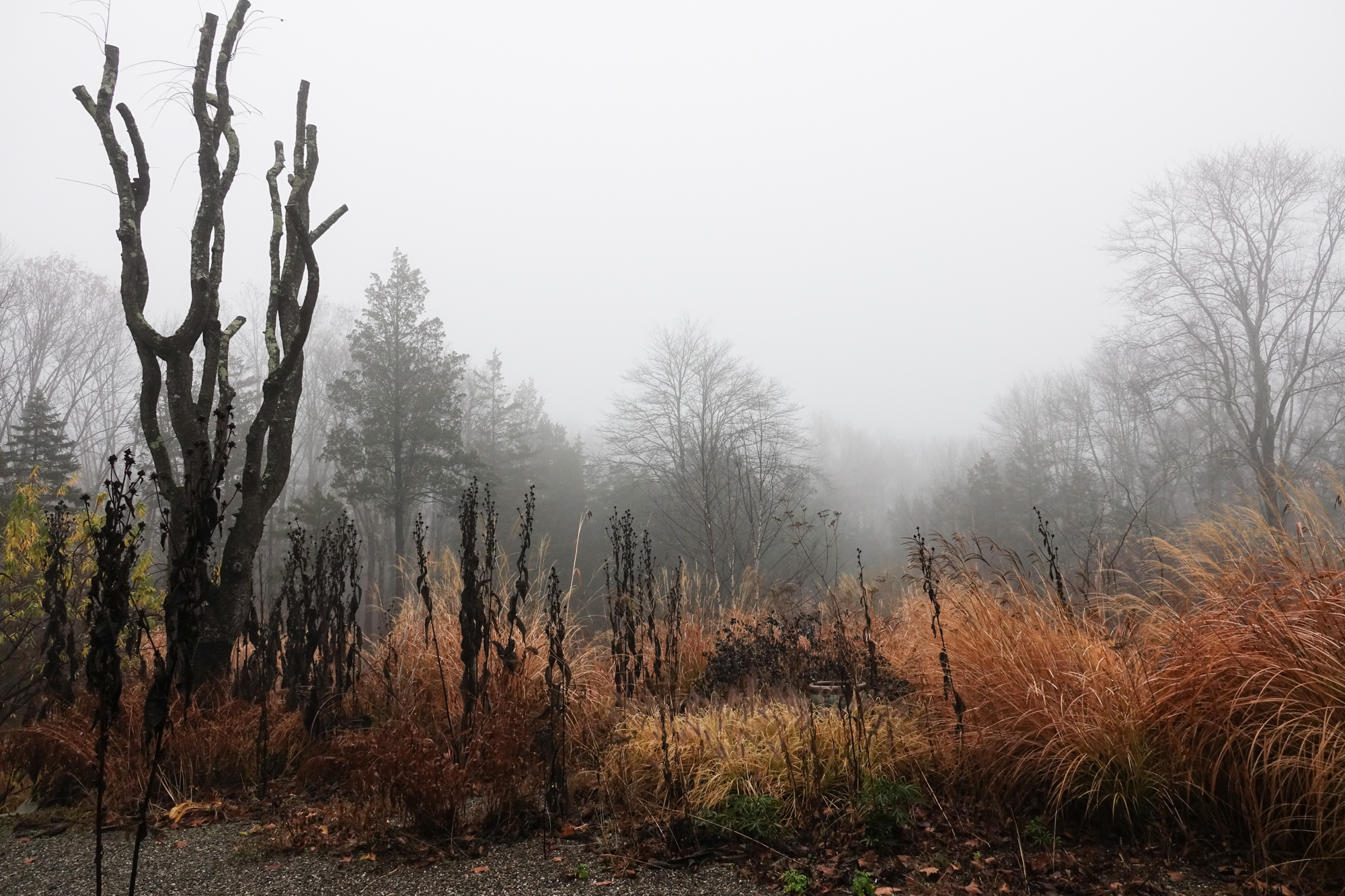 ... scenes like this might be read as nightmarish, apocalyptic, a fantasy of darkness ruling over lesser dark powers. Yet from an aesthetic distance, the scene also has (for me) a powerful emotional charge and a kind of severe beauty like an expressionistic painting. The tall, dead multi-stemmed tree off to the side towers ominously; it's threatening, overwhelming ... some change seems immanent ...
... scenes like this might be read as nightmarish, apocalyptic, a fantasy of darkness ruling over lesser dark powers. Yet from an aesthetic distance, the scene also has (for me) a powerful emotional charge and a kind of severe beauty like an expressionistic painting. The tall, dead multi-stemmed tree off to the side towers ominously; it's threatening, overwhelming ... some change seems immanent ...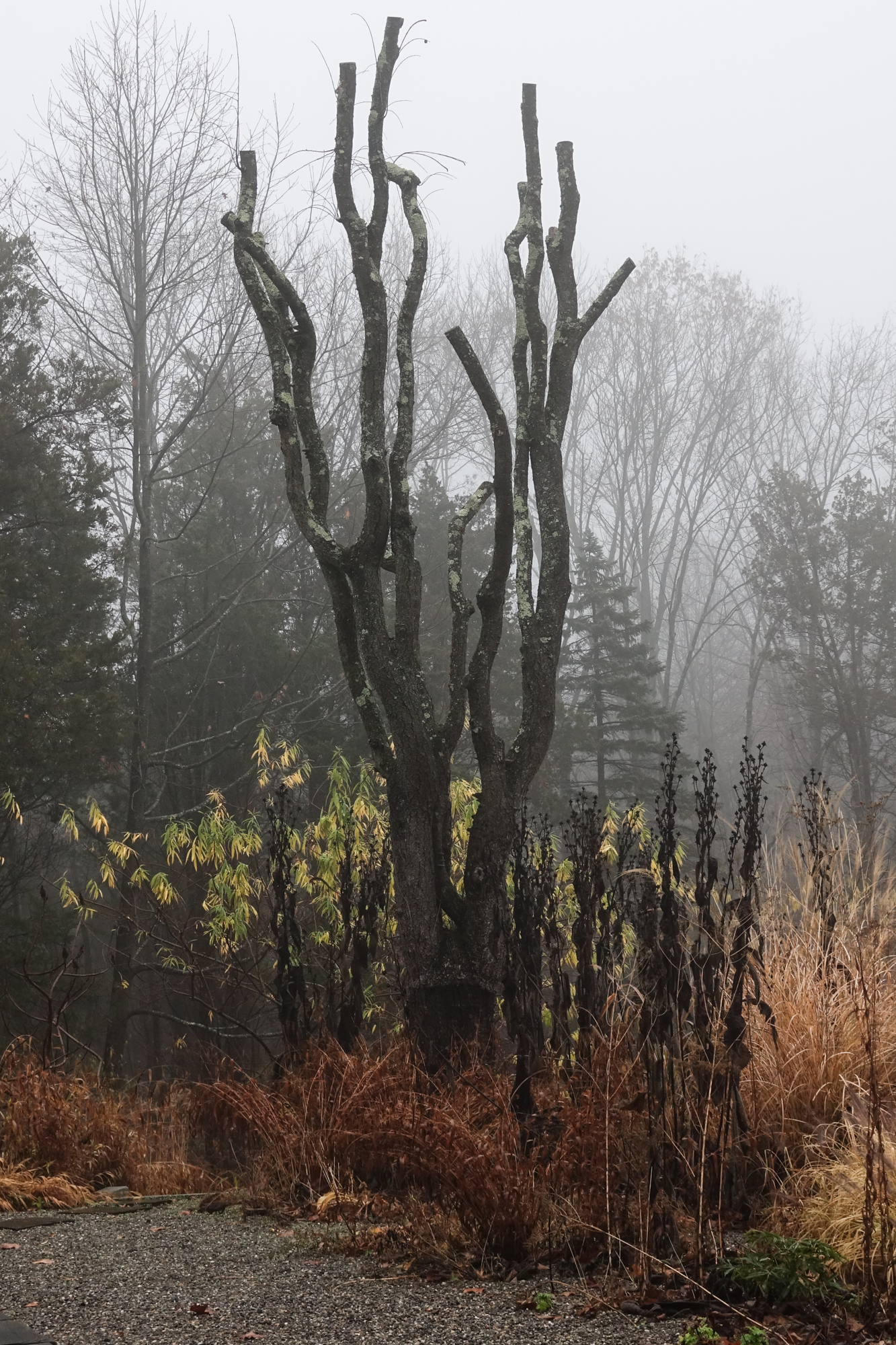 ... but this centered view of the same tree isn't. Its position suggests stability, a cross perhaps, or a stylized flame, and to me something more ... ceremony, magic, mystery, secret rites ... like the stone circle.
... but this centered view of the same tree isn't. Its position suggests stability, a cross perhaps, or a stylized flame, and to me something more ... ceremony, magic, mystery, secret rites ... like the stone circle.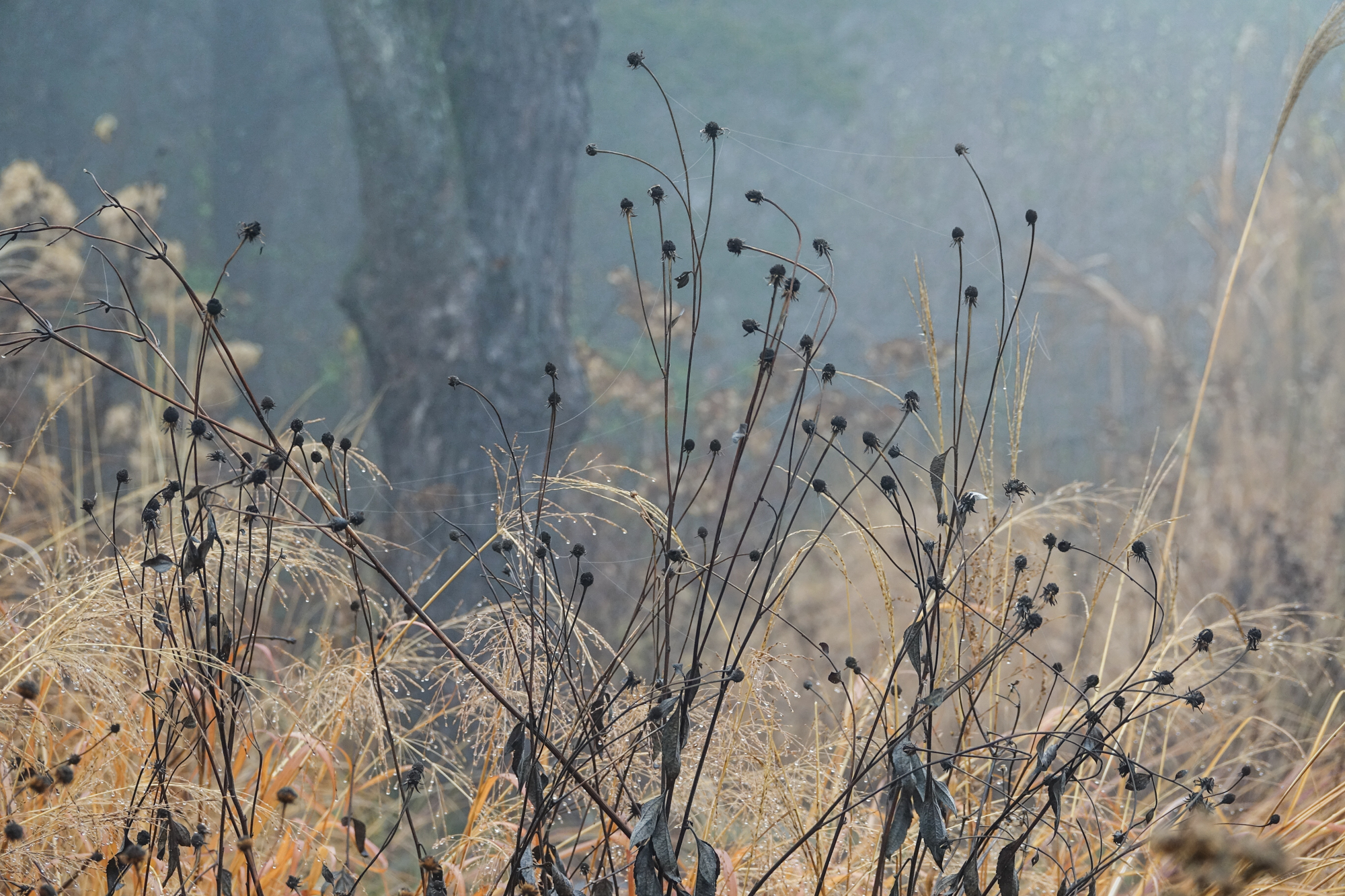 This change in background color and the thinner lines of the dark elements create a feeling of lightness ...
This change in background color and the thinner lines of the dark elements create a feeling of lightness ...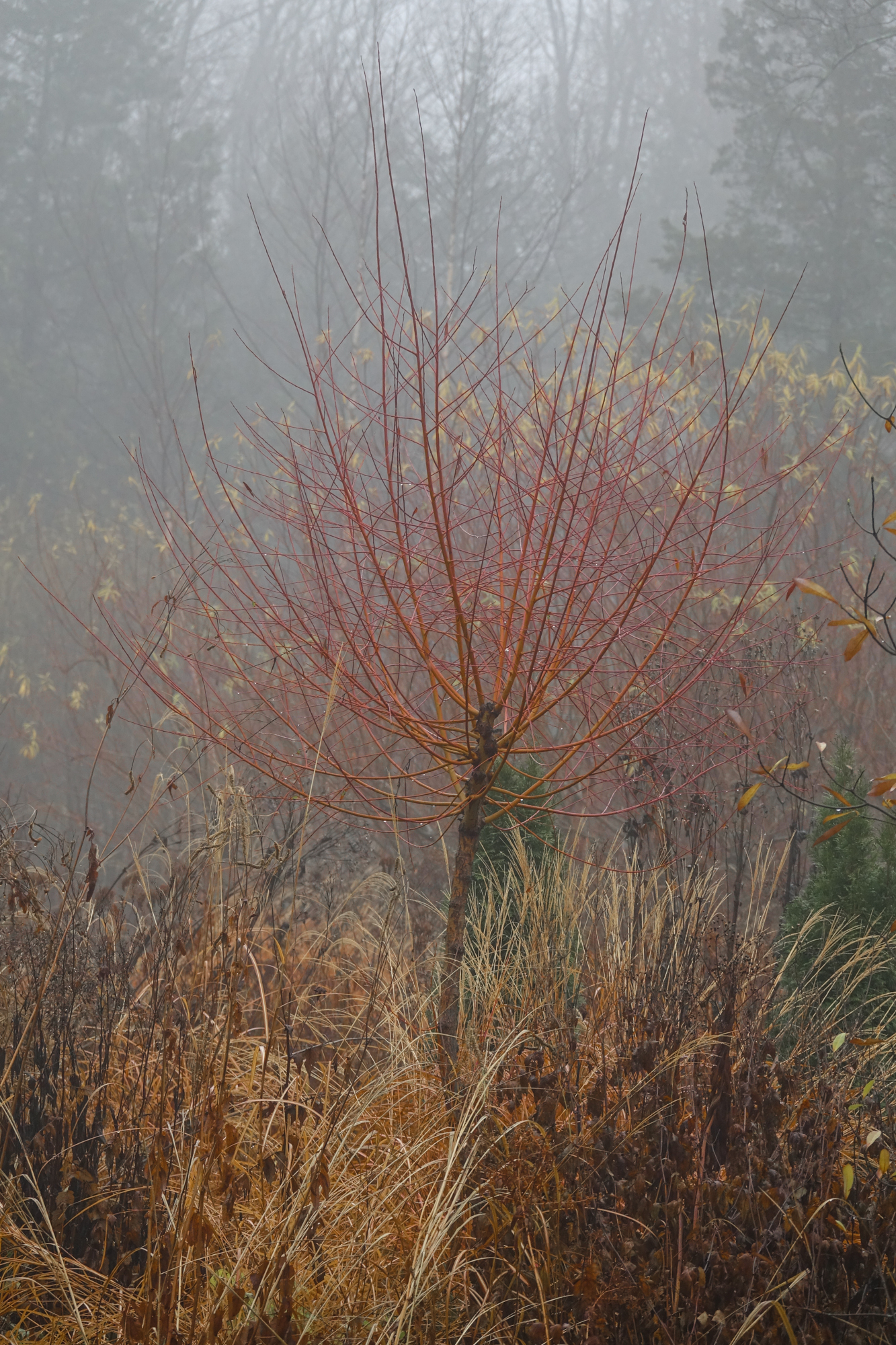 ... and the burnished orange of this pollarded willow transforms the intense oranges and blacks of the grassy scenes into a glowing goblet of color. The willow seems to preen like a peacock.Then colors change ...
... and the burnished orange of this pollarded willow transforms the intense oranges and blacks of the grassy scenes into a glowing goblet of color. The willow seems to preen like a peacock.Then colors change ...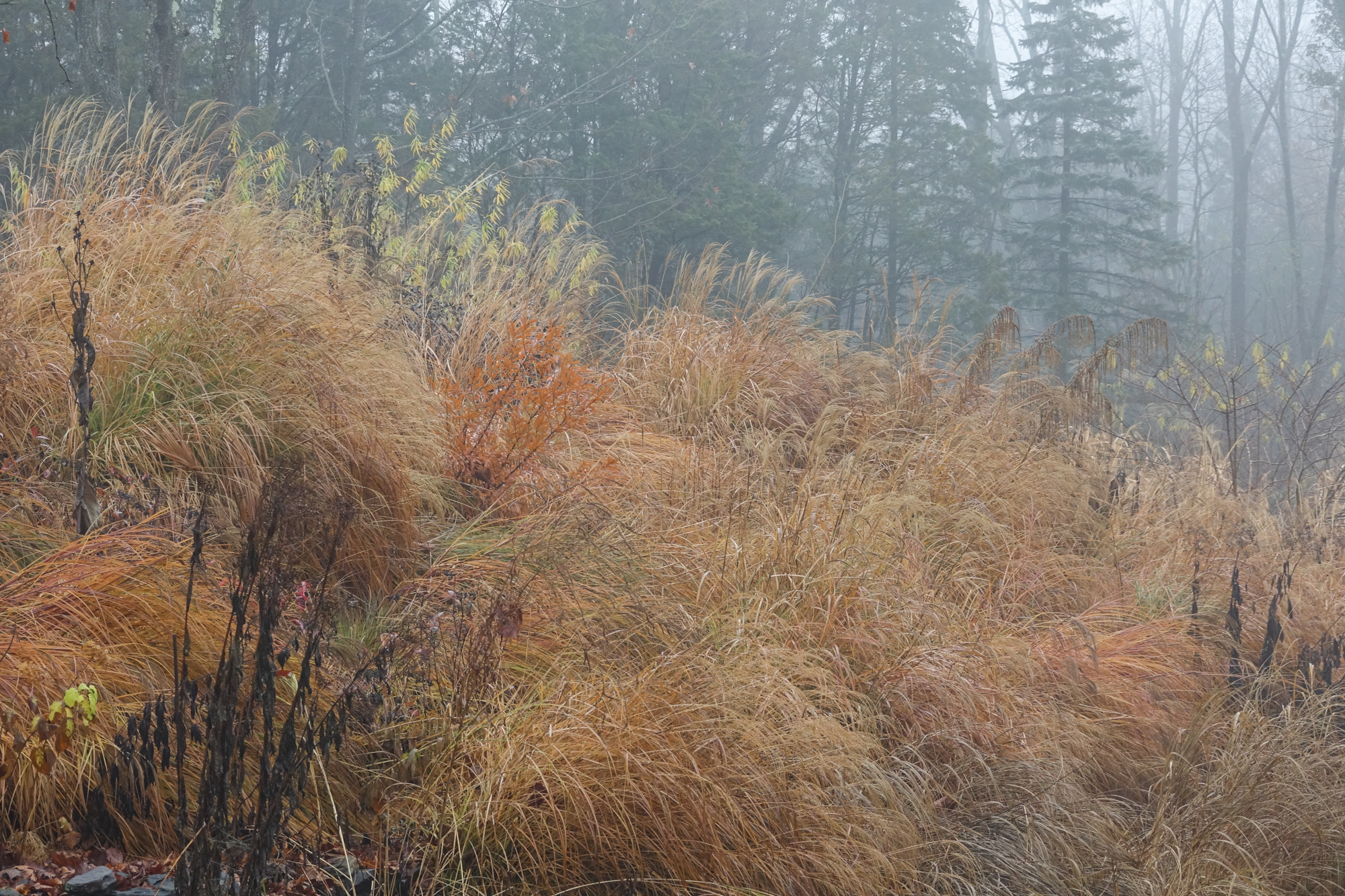 ... here, though I don't know whether it's the angle of the light or some other visual effect, the grasses are mostly pale pastels ...
... here, though I don't know whether it's the angle of the light or some other visual effect, the grasses are mostly pale pastels ...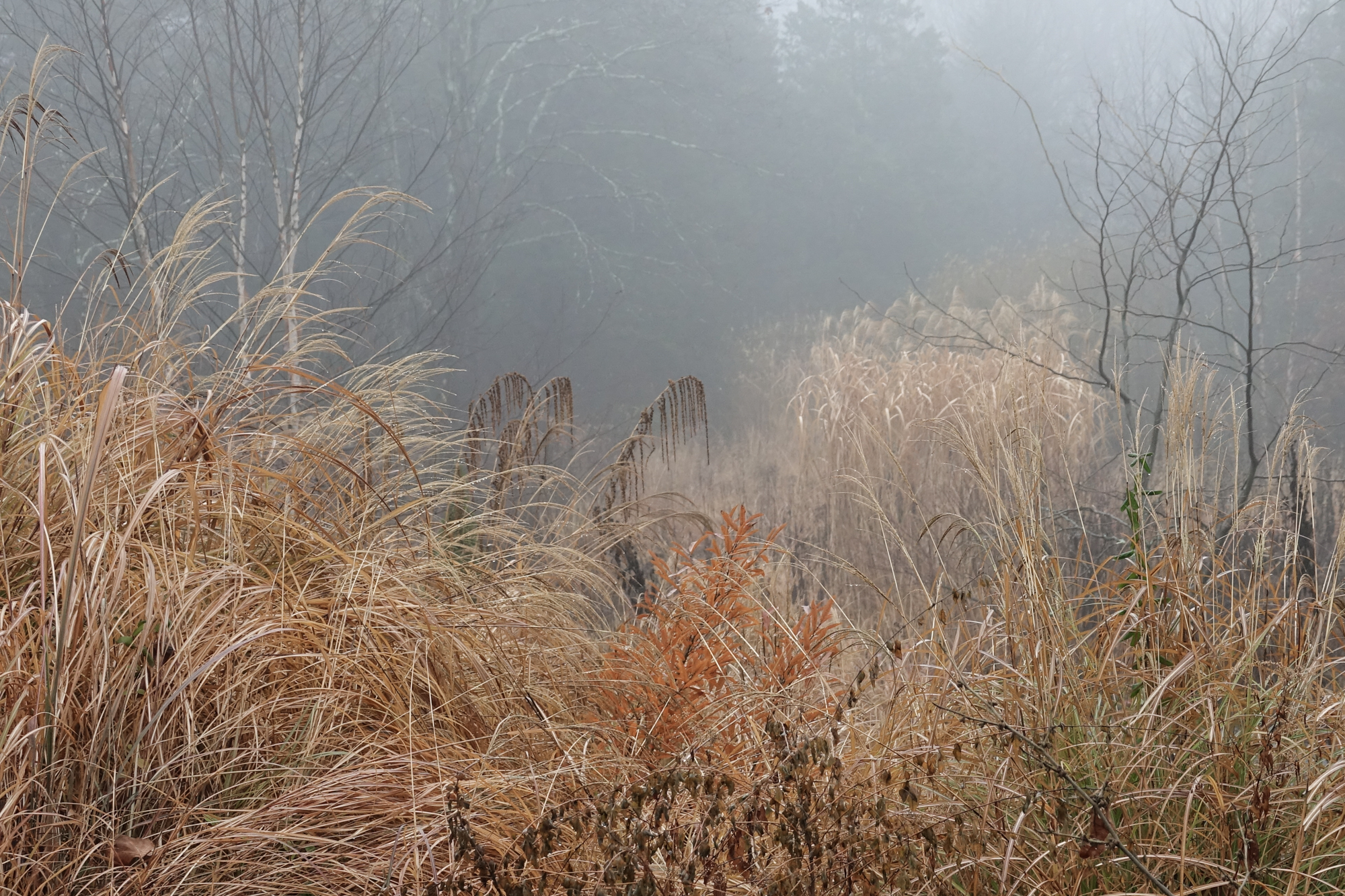 ... and here too, the lighter grasses allow the darker orange of the Lindera glauca 'Salicifolia', and the dark browns of the Baptisia and Datisca cannabina to play more dramatic roles.
... and here too, the lighter grasses allow the darker orange of the Lindera glauca 'Salicifolia', and the dark browns of the Baptisia and Datisca cannabina to play more dramatic roles.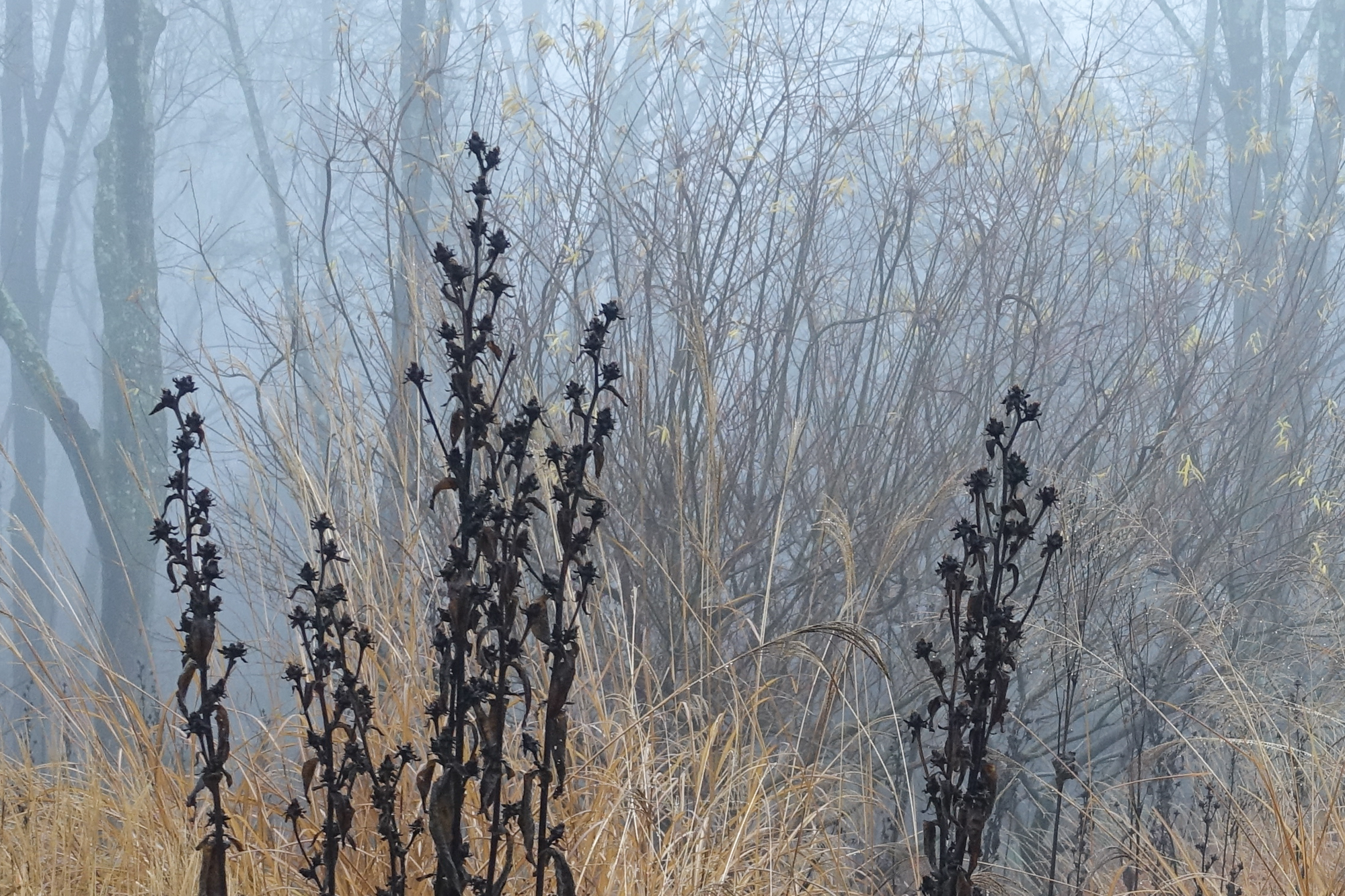 So much depends on weather...... seeing the garden after Hurricane Sandy passed through several years ago, I first realized a garden undergoing destruction can be like a kind of artistic papermaking. (That may sound strange unless you've watched an artist making paper.) Most of the garden had been blown away, but the few ragged standing plants and, more to the point, the mass of compressed vegetation on the ground surface, was strangely beautiful, with different colors, shapes and textures shining in the wetness. Ever since, I've had a fondness for the more destructive aspects of the dying garden.But to appreciate this requires some adjustment in expectation of what a garden can be.
So much depends on weather...... seeing the garden after Hurricane Sandy passed through several years ago, I first realized a garden undergoing destruction can be like a kind of artistic papermaking. (That may sound strange unless you've watched an artist making paper.) Most of the garden had been blown away, but the few ragged standing plants and, more to the point, the mass of compressed vegetation on the ground surface, was strangely beautiful, with different colors, shapes and textures shining in the wetness. Ever since, I've had a fondness for the more destructive aspects of the dying garden.But to appreciate this requires some adjustment in expectation of what a garden can be.